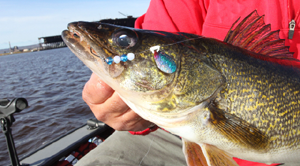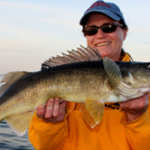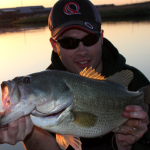By Daniel Quade
Spinner rigs are deadly weapons for walleyes. Offering an alluring combination of fish-attracting flash, vibration, scent and taste, these churning, twirling performers are versatile standouts on the presentational scene. Still, there are always ways to milk more bites from any spinning scenario, provided you’re willing to experiment with a variety of key factors.
Just ask walleye magnate Mike Christensen. A full-time guide and fanatical spin doctor based on Minnesota’s famed Mille Lacs Lake, he catches countless ’eyes on spinners each season, under all types of conditions.
“Spinners have a lot going for them,” he begins. “They can present live bait such as leeches, nightcrawlers and minnows slowly along bottom like Lindy Rigs. But you can also put the hammer down and fish ’em more like crankbaits to trigger reaction strikes.”
Indeed, speed is a great place to start tweaking your spinner program.
“You can pull spinners from .6 to 2.5 mph, and it pays to try different paces until the fish tell you what they want at the moment,” says Christensen.
He also encourages fellow walleye fans not to fall for preconceived notions about which speeds work, when. We’re conditioned to fish slower in cool water early in the season, he says, but if you’re out on a nice warm day and the walleyes are bunched up feeding in emerging weeds, don’t be afraid to try burning a spinner past them.
High-speed spinning also shines later on. Speeds up to 2.5 mph are hot during the summer peak in July, he says. Often, the fast-paced midsummer bite sees Christensen plying deep water offshore, where the need to reliably run rigs at depths of 20 feet or more brings up another highly tweakable facet of the spinning trade—weighting options.
“Bottom bouncers are standard sinker choices, and they catch plenty of walleyes each year,” he says, noting that 1½-ounce bouncers are his typical pick—depending on trolling speed and water depth. “In very clear water, such as we now see on Mille Lacs, lead-core line is a great alternative.”
In a nutshell, such line generally consists of a solid lead core cloaked a braided nylon sheathing. Sheath colors change every 10 yards so you can track letback by how many “colors” are deployed.
“Lead-core is stealthier than standard sinkers, and gives your lures and baits actions you don’t see with other weighting systems,” Christensen said. “It’s not for slow-trolling, however, or it will sink to bottom. ‘Core is perfect for faster speeds.”
Finding the right amount of letback to blaze blades just off bottom takes a little trial and error, he admits. But if you know how much lead-core it takes for a small crankbait like a River Rocker to hit bottom, adding an extra 20 to 30 feet of letback usually gets a spinner rig in the ballpark.
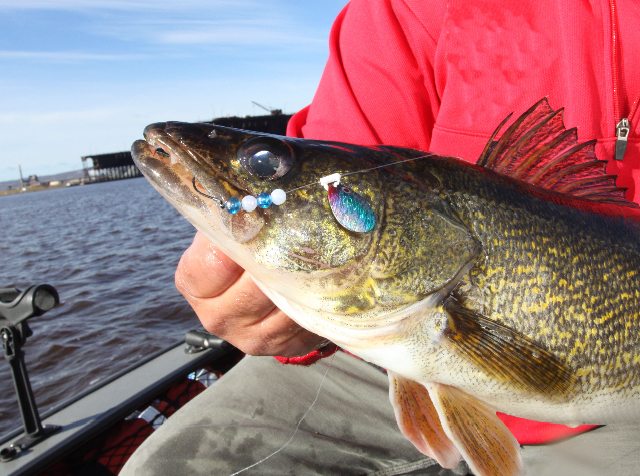
On the flip side, Christensen gives bottom bouncers the nod when tracing steep contours.
“Bouncers are ideal for the pinpoint positioning of your spinner rig along well-defined, steep edges, such as the bottom of a sharp break that drops from 12 to 14 feet.”
It’s worth noting, however, that mixing and matching sinker styles and spinner running depths is always a good plan until a pattern emerges.
“While I’m pulling a spinner behind a bouncer on the base of a break, I might have two more rigs running behind in-line sinkers over deeper water, checking for suspended fish,” he says. “At the same time, if the breakline leads up to a weedbed, I may run another spinner or two over the weeds, using a bullet sinker or small split shot for weight.”
Of course, the number of lines is always dictated by local regulations and how many anglers are aboard the boat. Christensen also plays with snell length, the distance separating the sinker from spinner blade. Long fluorocarbon snells stretching 72 inches like you find on the Lindy Spinner Rig and Crawler Harness, are great for clear water and spooky fish.
“Shorter snells like the 36-inchers on Little Joe’s Red Devil lineup of single- and double-hook harnesses, work well in stained conditions, as well as for casting or trolling through weeds.”
Tippings, too, are key considerations. And while nightcrawlers are top producers in a variety of situations, Christensen advises keeping an open mind on bait selection.
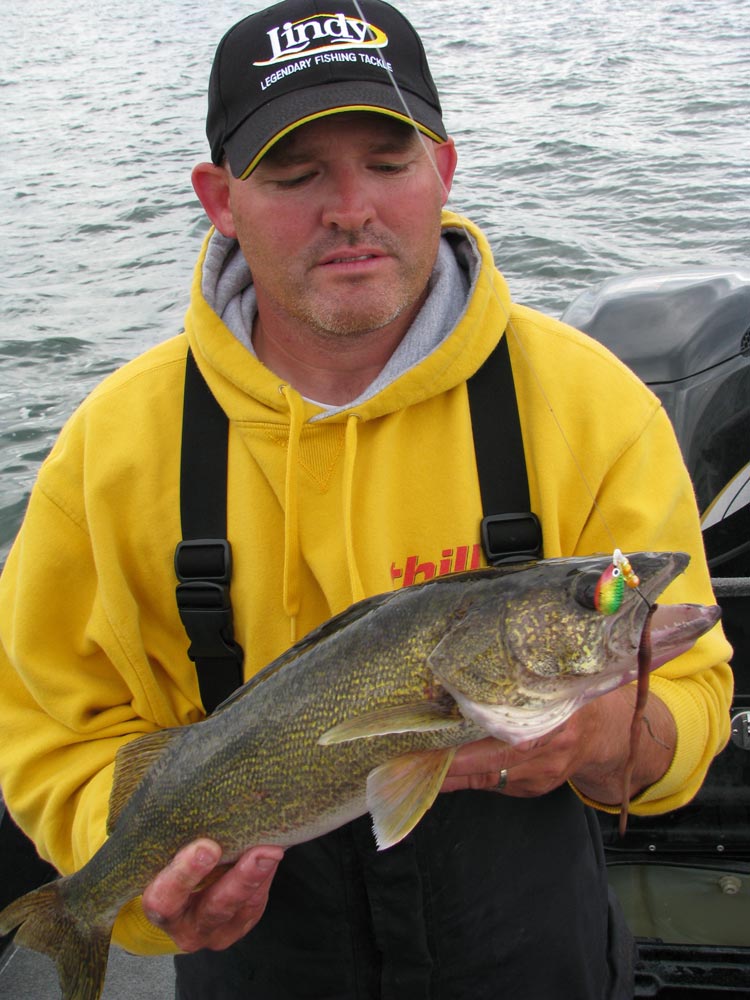 “During a bug hatch, ’crawlers are killers because they match the color of the insects the fish are feeding on,” he says. “Crawlers work well at other times, too, but when walleyes are keying on leeches, as often happens over hard bottoms in 20 to 25 feet of water, tipping spinner rigs with leeches catches more fish.”
“During a bug hatch, ’crawlers are killers because they match the color of the insects the fish are feeding on,” he says. “Crawlers work well at other times, too, but when walleyes are keying on leeches, as often happens over hard bottoms in 20 to 25 feet of water, tipping spinner rigs with leeches catches more fish.”
Likewise, minnows excel when baitfish are the main course, but Christensen has a trick up his sleeve for tipping with little fishes. He says that when walleyes are gorging on small minnows, he tips each of the hooks on a Lindy GS300 3-hook rig with a small fathead.
He uses a different rigging trick when working with ‘crawlers. He runs the lead hook through the very tip of the worm’s nose to prevent spinning. Then he rigs the second hook so there’s a bow in the harness line – not in the nightcrawler. This further promotes a straight retrieve. Instead of discarding a worm if a perch or small walleye nips off part of its posterior, Christensen jumps the gun and pinches it off himself before dropping it into the water.
“This does two important things,” he said. “First, it adds extra scent in the water. Second, it puts the end of the bait closer to the trailing hook. This improves your odds of a fish grabbing the hook when it takes the bait.”
While he prefers matching blade size, style and color, he encourages experimentation to identify the hot rig for the day.
“Perchy patterns are hot when walleyes are feeding on yellow perch, while purple or silver hues work well when tullibees are on the menu.”
In the end, he says, maximizing spinner rigging success hinges on your willingness to put all the triggering factors to the test until you hit the hot combination for the conditions at hand. Do that every trip, and you’re well on your way to spinning up more walleyes all season.



